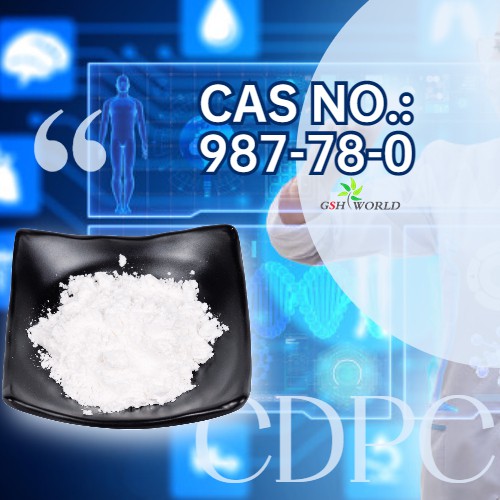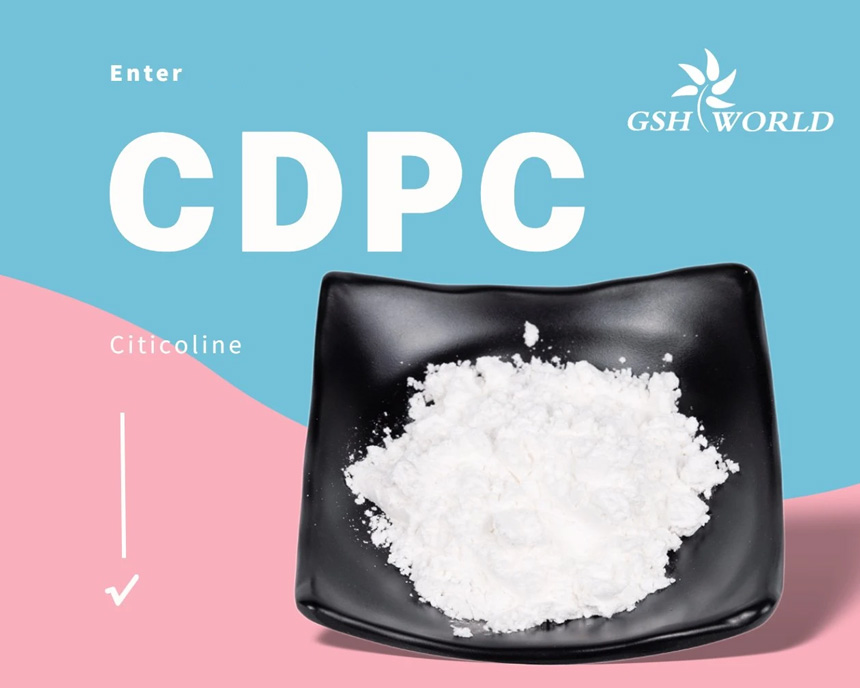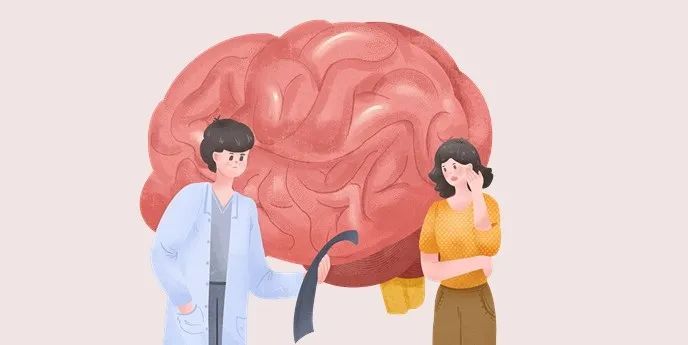Citicoline brain metabolic activator
It can promote brain cell respiration, improve brain function, enhance the function of the ascending reticular structure activation system, promote awakening, reduce cerebrovascular resistance, improve motor paralysis and brain blood circulation, promote brain substance metabolism, and promote the recovery of brain function.
In recent years, citicoline has been widely used in both neurology and neurosurgery.
It can be injected or taken orally.
The drug is often used in combination in clinical application, so what are the specific combination drug programs?
What are its indications (which diseases are specifically treated), efficacy and safety?
Regarding the application of this drug, what are the irrational drug use phenomena in primary medical units?
Cerebrovascular disease treatment agent representative drug: citicoline
Purpose of medication
Indications: It is mainly used to treat neurological symptoms caused by craniocerebral injury and cerebrovascular accidents.
Adult usage
(1) Intravenous infusion:
① Acute stage of cerebral infarction: 1000mg a day for 2 weeks.
② Disturbance of consciousness after brain injury and brain surgery:
250 ~ 500mg a day, diluted with 5% or 10% glucose injection after slow drip, 5 ~ 10 days for a course of treatment.
(2) Oral administration: 0.1 ~ 0.2g once in a stable period, 3 times a day.
Adverse reactions
Cardiovascular system: transient blood pressure drop, tachycardia, bradycardia.
Musculoskeletal: Spasms.
Immune system and infection: anaphylactoid reaction, anaphylactic shock, allergic asthma.
Nervous system: headache, insomnia, dizziness, tremors, irritability, excitement and cramps.
Hepatobiliary liver dysfunction. Gastrointestinal nausea, vomiting, lack of appetite, stomach pain, burning, diarrhea.
Skin and skin appendages: rash.
Precautions
(1) With a history of epilepsy, low blood pressure, liver and kidney insufficiency, use with caution.
(2) There is no scientific evidence for the safety of pregnant women and breastfeeding women, and it should be used with caution.
(3) Use with caution in patients with severe acute craniocerebral injury accompanied by cerebral hemorrhage, cerebral edema and increased cranial pressure.
Interact
(1) Levodopa: Combined use in patients with palsy tremor can cause muscle rigidity to worsen.
(2) Meclofenoxate: This product should not be used with meclofenoxate containing drugs when taken orally.

Co-use may cause overstimulation of the central system, resulting in a range of uncomfortable symptoms.
Common clinical combination of cholphosphocholine drugs
Oxiracetam + citicoline in the treatment of acute cerebral infarction
Clinical treatment results showed that oxiracetam combined with citicoline had a definite effect in the treatment of acute cerebral infarction, and could effectively improve the cytokine level, nerve function and quality of life, and improve the self-care ability of patients, which was significantly better than the control group treated with oxiracetam alone.
Administration method: Oxiracetam 4 g plus 0.9% sodium chloride injection 250 ml intravenously, once a day; Citicoline 0.5g plus 5% glucose injection 100ml intravenously, once a day. Continuous treatment for 1 month.
Donepezil + citicoline
Treatment of Old Man vascular dementia/Type 2 diabetes combined with Alzheimer’s disease
The clinical results showed that compared with citicoline sodium alone, Citicoline sodium combined with Donepezil hydrochloride in the treatment of vascular dementia can significantly improve the mental state and cognitive function of patients, and the adverse reactions are mild.
Methods of administration: Citicoline sodium tablets were taken orally 0.2g, 3 times/day; Donepezil hydrochloride tablet is taken orally 5mg once before going to bed every night, and increased to 10mg once a day after 1 month. Take it for 8 weeks.
Other clinical studies have shown that Donepezil combined with citicoline sodium has accurate efficacy and good safety in patients with type 2 sugar disease combined with Alzheimer’s disease, and can improve patients’ daily living ability, enhance patients’ memory and language ability.
Methods of administration: On the basis of routine treatment such as blood sugar control, the patient was given Donepezil hydrochloride orally 5 mg once a day before going to bed;
Citicoline sodium capsule 0.2g orally, 3 times/day. The treatment was continued for 16 weeks without taking other drugs that affect memory.
Piracetam + citicoline
Treatment of MCI after acute cerebral infarction
Clinical treatment results showed that piracetam combined with citicoline can improve mild cognitive dysfunction (MCI) after acute cerebral infarction, which is suitable for clinical acute cerebral infarction patients and significantly better than the control group.
Methods of administration: On the basis of conventional treatment (such as anti-platelet aggregation, control of blood pressure, blood sugar, regulation of lipids and plaque stabilization, nerve nutrition, etc.), the control group given cyticoline 0.5g plus 250 mL 0.9% NaCl solution intravenically, once a day.
A total of 14 days of treatment. Observation group treated with piracetam tablet 0.8g orally, 3 times/day for 4 weeks on the basis of the treatment regimen of control group.
Ginkgo biloba leaves + citicoline
Treatment of ischemic stroke/vascular dementia
Clinical treatment results showed that Ginkgo biloba combined with citicoline can reduce excitatory amino acid levels, increase brain blood flow and avoid nerve cell apoptosis in ischemic stroke.
It concluded that the combined treatment scheme can an effective supplement to the conventional western medicine treatment of memory dysfunction in patients with ischemic stroke.
Medication method: Based on conventional treatment (such as antiplatelet, anticoagulant, defibrination, etc.), the patient given citicoline 0.55G + 5% glucose solution 500ml intravenously, once a day; Ginkgo biloba leaves taken orally 19.2mg 3 times a day. Treatment for 4 weeks.
Other clinical studies have shown that the combined use of citicoline sodium tablets and ginkgo leaves in the treatment of vascular dementia can improve brain microcirculation, promote brain function recovery, and significantly improve patients’ cognitive function.
Methods of administration: On the basis of conventional treatment, the control group given citicoline sodium tablet 0.2g orally, 3 times/day;
Observation group additionally given 1 tablet of ginkgo biloba leaf orally, 3 times a day, and treated for 3 months.
Naoxintong Capsule + Citicoline
Treatment of acute cerebral infarction convalescent period
The clinical treatment results showed that Naoxintong capsule combined with citicoline sodium capsule could improve nerve function deficit and hemorheology indexes, reduce the levels of platelet protein kinase C (PKC), pentapositive polymerase 3 (PTX3), angiotensin Ⅱ (AngⅡ) and α-granular membrane protein (GMP-140), and improve the patients’ ability of daily living.
Methods of administration: On the basis of conventional treatment, the control group took citicoline sodium capsules orally, 2 capsules/time, 3 times/day.
Treatment group given Naoxintong capsule orally, 3 capsules/time, 3 times/day on the basis of control group. Both groups treated for more than 4 weeks.
The irrational use of citicoline is common in basic hospitals
Drug use without indication:
For example, the patient, female, 92 years old, clinical diagnosis: chest impediment heart pain disease; Syndrome of qi stagnation and blood stasis;
Tinea of the hand; Sleep disorders. Prescription: 4 boxes of ginkgo leaf; Citicoline sodium tablets 5 boxes;
1 miconazole nitrate cream.
Citicoline sodium tablets used for the treatment of neurological sequelae caused by craniocerebral injury or cerebrovascular accidents, and there no diagnosis of this drug in the prescription.
Unsuitable indications:
For example, the patient, female, 78 years old, clinical diagnosis: coronary heart disease; Syndrome of qi stagnation and blood stasis;
Chest impediment heart pain disease; Hyperlipidemia; A state of depression.
Prescription: 20 boxes of Wenxin granules; Atorvastatin calcium tablets 8 boxes; Citicoline sodium tablets 15 boxes.
Qi stagnation and blood stasis syndrome, chest bi heart pain disease open Wenxin granule;
Atorvastatin calcium tablets prescribed for coronary heart disease and hyperlipidemia.
It is obviously not appropriate to prescribe citicoline sodium tablets for depression.
Overprescription:
For example, the prescription of citicoline sodium in the outpatient department of a basic hospital is 8.6 boxes of citicoline sodium tablets per prescription, which can taken for 34.4 days, exceeding the dosage used in the outpatient department of chronic disease for 28 days.
reference
- [1] Shi Jimei. Effect of oxiracetam combined with citicoline in the treatment of acute cerebral infarction [J]. Chinese Journal of Practical Medicine, 2019,18 (10) :98-100. (in Chinese)
- [2] Huang Li, You Yanding. Effect of Donepezil hydrochloride on older people vascular dementia [J]. Chinese Journal of Rural Medicine, 2023,30 (6) : 41-42. (in Chinese)
- [3] Zhao Jiasheng, Miao Haifeng. Clinical study of Donepezil combined with citicoline sodium in treatment of type 2 diabetes mellitus combined with Alzheimer’s disease [J]. Chinese Community Physician,2022, (30) :61-63.
- [4] Peng Bo, Song Xizhu. Clinical study of piracetam combined with citicoline to improve MCI after acute cerebral infarction [J]. Chinese and Foreign Medical Journal, 2019,42 (17) : 119-123.
- [5] Wu Guoli. Effect of citicoline combined with ginkgo biloba leaves on memory dysfunction after ischemic stroke [J]. Journal of Hebei Medicine, 2019,43 (9) : 1385-1388.
- [6] Fang Jincai, Zhang Jiake. Clinical study of Ginkgo biloba leaf combined with Citicoline sodium tablets in treatment of vascular dementia [J]. New Chinese Medicine, 2019,52 (23) : 57-60. (in Chinese)
- [7] Wang Liang, Feng Heqiang. Clinical study of Naoxintong capsule combined with Citicoline sodium in the treatment of convalescent stage of acute cerebral infarction [J]. Modern Medicine and Clinic, 2019,35 (12) : 2342-2346.




